The arrival of the Tibetan Autonomous Region delegates from Lhasa for the 17th National Congress of the Communist Party of China coincided with our outward flight to Lhasa from Deqen airport. The Congress flight had been delayed, resulting of course in a much delayed flight for us.
The only first class passengers, we sat transfixed in the plush Deqen departure lounge watching the amazing pomp and ceremony of the Congress officials and huge number of military guards on the airport tarmac to welcome their arrival. We were soon joined in the lounge by senior party cadres. The looked only briefly at us obvious foreigners, then fell into serious conversations with their party colleagues.
Wikipedia describes the Congress: "The Chinese Communist Party National Representatives Congress is a party congress that is held about every five years. The National Congress is theoretically the highest body within the Communist Party, but in practice important decisions are made before the meeting" Sounds familiar???
The Congress is traditionally held in The Great Hall of the People in Beijing. It comprises 2,117 full delegates and a staggering 73,360,000 representative party members - a membership well over three times the population of Australia!
The Congress certainly had immense national and international media coverage during our entire stay in China. Although mostly presented in Chinese, we watched intently on television every night at this highly sophisticated Congress and the polished and highly distinguished performances of President Hu Jintao and Premier Wen Jiabao. This was a country looking enormously confident in its leadership and future prosperity.
We stayed in the airport lounge for some time before we were escorted like royalty by the airport officials onto our flight to Lhasa. What a buzz! We almost felt like party cadres ourselves.
The flight from Zhongdian to Lhasa was nothing short of breathtaking. It transverses some of the most inhospitable mountainous areas of the world, and cuts across the very tip of Myanmar (Burma).
As we were travelling only a relatively short distance our flight was low enough to see a lot of detail below. Massive craggy peaks covered with snow gave way to huge round bald mountains with tiny villages dotted here and there in valleys or on the sides of mountains with the steepest terraces imaginable. Access to these villages was by death defying trails snaking up the mountain sides. Indeed it was difficult to see how there could be any access at all to some of the remoter villages. People in these villages are living at the highest altitudes for human existence in the world - about 6,600m we were told. For many hundreds of kilometers there were no signs of life at all.
Lhasa (Gongkar) airport is highest airport in the world, and is some 500m higher than Deqen airport at Zhongdian. Chinese restrictions on travel in Tibet mean that the only means of entry for tourists is to be on a guided tour. As mentioned, our tour was organised through China Travel Service (CTS) and comprised just the two of us. With no problems passing through customs into Gongkar airport we were pleased that all our efforts to organise this tour had been carried out well in advance without the worries of last minute organisation in Zhongdian. Well, that is what we thought....
Unfortunately, and for reasons still unknown to us, our trip had been totally overlooked by CTS contractors. We waited hopefully as one by one the inbound tourists were happily met by their tour guides and driven back to Lhasa. For one and a half hours we waited miserably with no sign of our tour guide or driver. Amazingly as it seems now, we had no mobile phone with us and we were really on our own not knowing what was going on.
Once again generous local people came to our rescue. A number of tour guides who were awaiting another delayed incoming flight became obviously concerned at our plight. One spoke excellent English and kindly offered us the use of his mobile phone. And it was with great relief that I was able to call straight through to our CTS representative at the Head Office in Beijing and try to get some sense of what was going on. Well, we had been forgotten but at least we were in communication.
After another hour's wait we were finally picked up by our rather agitated guide Lochoe and driver Mr Yu. It was plainly obvious that they had no idea we were arriving which meant a lot of last minute organisation.
Tibet is of course a highly sensitive region to the Chinese authorities and tourists must have authorised travel permits for any travel outside of Lhasa and the cities of Shigatse and Tsedang. It must have been quite a headache for Lochoe trying to organise our tour at the last minute. Time and time again we were required to surrender our passports for the endless bureaucratic paperwork associated with gaining individual permits for the areas we were to travel in.
On a positive side however, Lochoe was a great guide. A young Tibetan man, Lochoe was a lovely and very decent person, and a mine of information about his home of Tibet, its history, religion and culture. Mr Hu was a delightful man and thankfully a very good and experienced driver. Although he could not speak English – or Tibetan for that matter – he was great company and totally reliable. Lochoe trained as a novice monk for five years in the Pelkhor Chode Monastery in the rural Tibetan town of Gyantse. Mr Yu was a former People's Liberation Army (PLA) soldier then a truck driver for many years. Originally from Szechuan, he now lives in Tibet but commutes back home in the non-tourist season where his family still reside. Life is tough in China.
An interesting combination, Lochoe and Mr Yu obviously got along very well and were a delight to be with for the week we spent in Tibet. There is virtually no public transport in Tibet and our one week tour was by a Hyundai van.
The road from Gongkar airport to Lhasa is about a 100 km trip travelling through countryside that looks like you are on the moon. Like most of Tibet, it is very high arid plateau country surrounded by massive bare chocolate powdered mountains. The landscape reminded us of television documentaries we had seen of the brutally tough desert environment of Afghanistan. This was quite a revelation to us both. For some reason we imagined Tibet to be a fertile and highly timbered region. It probably was once. Climate change we were to witness all through our travel in western China is not a new phenomenon and had occurred throughout the eons of time, well before human intervention and industrialisation.
The city of Lhasa is low rise, very laid back and the locals were very friendly. We were so tired that all we could manage that afternoon was a walk around the hotel. True to form we found a supermarket with essential supplies of beer, coffee, dry coffee whitener - and hair gel. What a find.
Our Manasarovar Hotel in Lhasa was very opulent and very Tibetan in architecture. The staff was very helpful and like a lot of Tibetans, spoke very good English. This was yet another surprise to us. The level of education in Lhasa is most impressive and many of the locals are fluent in English.
Our hotel was brand new but frustratingly most things didn't work - that is the fridge, air conditioner and phone. Trying to get an international call out meant we had to make a 200 Yuan deposit (about $AUS30) at the front desk first before we were allowed phone access. It didn’t really cause any problems – we just needed to know the rules! Alan was very grateful when we got the fridge repaired had some cold beer at last, and got the air conditioner working. It was quite bizarre in that like Zhongdian, all rooms in Tibetan hotels were so DARK. We assumed it must be due to the high cost of power. As we walked along the endless hotel corridors the sensor lights came on which then turned the lights on down the passageway. Whatever you did, you didn't stop otherwise you were more than well and truly in the dark.
Whilst the hotel was opulent, just looking out of our hotel window was heart rendering. Families were living right next door to our hotel in mud huts in absolute filth surrounded by an amazing mass of rubbish which they sorted through each day. We guessed they had rights to the Lhasa rubbish dump. Grimy children played amongst the piles of rubbish and women carried enormous vats of water for washing and cooking. It felt obscene to try to enjoy a beer in our room. We were however intrigued with a solar hot water set up these people had. Indeed they were common throughout Tibet. They were just a large metal saucer set up – simple but obviously very effective and cost efficient.
The next morning, waiting to be picked up by Lochoe and Mr Hu, we made friends with a charming Japanese couple. It was their first visit to Tibet and being of Buddhist faith they were very excited to visit Tibet and the holy city of Lhasa. It was great fun to discuss our own experiences in Japan, a country that we had spent some time in during our working life and whose people we had such a close relationship with.
We thoroughly enjoyed the lovely holy city of Lhasa. The city is so high that the brightness and intensity of the sunlight is almost blinding. The sky was a vivid azure blue contrasting brilliantly with the abundance of stunning whitewashed local buildings and temples, and in the distance the wonderful Potala Palace staged against a backdrop of the wrinkled arid brownness of massive treeless mountains. And for once Alan agreed to wear sunglasses.
Like all tourists, we visited Jokhang Temple and the legendary Barkhor (pilgrim circuit) and the exotic and fascinating Barkhor markets. The atmosphere certainly sucks you in. There is a real feeling of peace and calm. The city was simply alive with thousands of fervent pilgrims who had travelled amazing distances from the rugged far-east (Khambas) and there were many nomads (Goloks and Amdo people) from the north, all with brightly coloured and ornate traditional clothing and long braided hair and elaborate jewelled beads.
We saw pilgrim men and woman at the temples who looked so frail and old prostrating themselves over and over again, and then doing immense climbs of the temples. Their intense faith was admirable. We were told that these particular pilgrims had spent some weeks travelling from far flung and remote villages in eastern Tibet, where we had just flown over on our way to Lhasa. Their faces were weather beaten and lined with hardship and we expect many stories of their life and culture in the rugged environment of their homes. These people were understandably absolutely filthy from continually prostrating themselves in the dust and grime, and also because of the obvious lack of facilities during their long arduous journey.
Lochoe was in great admiration of these poor pilgrims and spent many hours explaining to us their culture and religious commitment in undertaking seemingly impossible journeys on their pilgrimages to Lhasa. We were intrigued as to how these desperately poor people could afford to take the trip. Lochoe explained that these pilgrims were either nomads or subsistence farmers who travelled just before the winter season when their farms could be left and then are accommodated by the Buddhist monks at the monasteries, sometimes for up to five months at a time. It was still a mystery to us how such a large proportion of extremely old and frail people could undertake such a journey in such harsh conditions.
Throughout our journeys through Tibet we were to greatly appreciate the advantage of having just a guide and driver to ourselves. We certainly learnt a lot about everyday life in this extraordinary country and it was a great privilege for us to have a guide who was as passionate and knowledgeable as Lochoe.
Later that morning we visited the "must see" Potala Palace, summer palace of the Dalai Lama. Like most people we had seen many photos of Potala Palace but nothing prepares you for the sheer enormity and magnificence of it. As they say, it touches the sky. Oh, but what a climb. We were not looking very fit at the top of it but neither was anyone else. A climb of only 300 m but straight up nearly kills you at this altitude. Even the young people were clutching their chests. The palace is immense with some 1,000 palace chambers. The individual chambers however were horribly claustrophobic. They were packed with pilgrims and tourists and everywhere are huge vats of burning yak butter that are offerings to the Buddahs. The smell of rancid yak butter was to permeate our clothing all through our travels in Tibet and we couldn’t help but think what a potential fire hazard the burning butter must be.
We did not expect to buy a carpet so early in our travels but in a small factory "Tashi Delek" in Lhasa, we bought a beautiful silk Tibetan carpet*. We fell in love with it but it was fairly large and heavy, and we had no idea how we were going to carry it on our travels. We also bought a traditional and very ornate Tibetan painting. Anyway, it's a bit of Lhasa we will always enjoy and will remind us our few days there.
We had a very enjoyable lunch in Lhasa at the Barkhor markets in a Tibetan restaurant that looked over the Jokhang Temple and the markets. The local Lhasa Beer and the Tibetan and Nepalese food were excellent. It was great fun.
That night back in our lovely Manasarovar Hotel we were quite taken aback to see the foyer and area outside the dining room full of white coated, masked medical staff, stethoscopes draped around their necks, wheeling numerous people around in wheel chairs with drips attached. The intensity and seriousness of such an event was quite bizarre. What on earth had happened to these people, we asked? If it was not so astounding - and obviously quite serious - the whole scene looked quite comical. Any form of amusement was quashed however when to our surprise we saw our Japanese woman friend in a wheel chair too, complete with drips and oxygen cylinder. Our poor friend was highly embarrassed. She had collapsed during her tour of Potala Palace from oxygen depletion and associated altitude sickness problems. It certainly gave us another view on medical situations that can arise at these high altitudes.
* Note, we bought this rug from the factory shop "Tibet Tashidelek Hand Made Carpet & Crafts Co. Ltd". Kate, the shop manager was a delight to deal with and we were able to ship it back home to Australia with no problems. Later and from home we bought a number of very fine Tibetan rugs from her business. We found Kate to be totally professional and honest. She can be contacted on email: tibetcarpet@126.com, or tibetcarpet@hotmail.com Her company address is: no.41, Beijing Mid-road, Lhasa, Tibet
Mystical Lhasa
Thursday, October 11, 2007
 Lhasa, Tibet, China
Lhasa, Tibet, China
Other Entries
-
1From Crowdy Head to Sydney - Our Journey Begins
Oct 065 days prior Crowdy Head, Australiaphoto_camera0videocam 0comment 0
Crowdy Head, Australiaphoto_camera0videocam 0comment 0 -
2On the Eve - Our Journey to the Distant Chinas
Oct 074 days prior Sydney, Australiaphoto_camera2videocam 0comment 0
Sydney, Australiaphoto_camera2videocam 0comment 0 -
3A Brief Return to Our Favourite City of Shanghai
Oct 083 days prior Shanghai, Chinaphoto_camera5videocam 0comment 0
Shanghai, Chinaphoto_camera5videocam 0comment 0 -
4Our Journey to Zhongdian, via Kunming
Oct 092 days prior Kunming, Chinaphoto_camera2videocam 0comment 0
Kunming, Chinaphoto_camera2videocam 0comment 0 -
5Two Delightful Days in Shangri-la - "Paradise"
Oct 101 day prior Zhongdian, Chinaphoto_camera8videocam 0comment 0
Zhongdian, Chinaphoto_camera8videocam 0comment 0 -
6Mystical Lhasa
Oct 11 Lhasa, Chinaphoto_camera8videocam 0comment 0
Lhasa, Chinaphoto_camera8videocam 0comment 0 -
7Friendly and Not so "Ho-Hum" Tsedang
Oct 132 days later Tsedang, Chinaphoto_camera16videocam 0comment 0
Tsedang, Chinaphoto_camera16videocam 0comment 0 -
8Rural Tibet - Our Desert Journey to Gyantse
Oct 154 days later Gyantse, Chinaphoto_camera19videocam 0comment 0
Gyantse, Chinaphoto_camera19videocam 0comment 0 -
9More of Rural Tibet - Our Trip to Shigatse
Oct 165 days later Shigatse, Chinaphoto_camera4videocam 0comment 0
Shigatse, Chinaphoto_camera4videocam 0comment 0 -
10Returning to Lhasa
Oct 187 days later Lhasa, Chinaphoto_camera4videocam 0comment 0
Lhasa, Chinaphoto_camera4videocam 0comment 0 -
11Aboard the Lhasa Express - Lhasa to Golmud
Oct 198 days later Golmud, Chinaphoto_camera18videocam 0comment 0
Golmud, Chinaphoto_camera18videocam 0comment 0 -
12Salt Pans, Altun Shan and a Taklamakan Apparition
Oct 209 days later Dunhuang, Chinaphoto_camera6videocam 0comment 0
Dunhuang, Chinaphoto_camera6videocam 0comment 0 -
13Lovely Dunhuang - An Oasis in the Gobi Desert
Oct 2211 days later Dunhuang, Chinaphoto_camera16videocam 0comment 0
Dunhuang, Chinaphoto_camera16videocam 0comment 0 -
14Frenetic Liuyuan and our Rail Trip to Turpan
Oct 2312 days later Turpan, Chinaphoto_camera0videocam 0comment 0
Turpan, Chinaphoto_camera0videocam 0comment 0 -
15Toward Turpan - Our Welcome to Xinjiang Province!
Oct 2413 days later Turpan, Chinaphoto_camera2videocam 0comment 0
Turpan, Chinaphoto_camera2videocam 0comment 0 -
16Tales of Turpan - Second Lowest Basin in the World
Oct 2413 days later Turpan, Chinaphoto_camera11videocam 0comment 0
Turpan, Chinaphoto_camera11videocam 0comment 0 -
17Exotic Urumqi - As Far From the Sea as You Can Be
Oct 2615 days later Ürümqi, Chinaphoto_camera7videocam 0comment 0
Ürümqi, Chinaphoto_camera7videocam 0comment 0 -
18Twenty Three Hours to Kashgar by Rail
Oct 2817 days later Kashgar, Chinaphoto_camera0videocam 0comment 0
Kashgar, Chinaphoto_camera0videocam 0comment 0 -
19Our Introduction to the Frontier City of Kashgar
Oct 2918 days later Kashgar, Chinaphoto_camera4videocam 0comment 0
Kashgar, Chinaphoto_camera4videocam 0comment 0 -
20A Driver Called Mukhtar - Travels to Tashkorgan
Oct 3019 days later Tashkorgan, Chinaphoto_camera14videocam 0comment 0
Tashkorgan, Chinaphoto_camera14videocam 0comment 0 -
21Kashgar Old City, More Carpets and Abdul Karim
Oct 3120 days later Kashgar, Chinaphoto_camera7videocam 0comment 0
Kashgar, Chinaphoto_camera7videocam 0comment 0 -
22On the Home Run - From Kashgar Back to Urumqi
Nov 0222 days later Ürümqi, Chinaphoto_camera4videocam 0comment 0
Ürümqi, Chinaphoto_camera4videocam 0comment 0 -
23From Urumqi to Shanghai, Sydney and Home
Nov 0424 days later Shanghai, Chinaphoto_camera1videocam 0comment 0
Shanghai, Chinaphoto_camera1videocam 0comment 0 -
24Home In Crowdy Head and A Message to Our Readers
Nov 0525 days later Crowdy Head, Australiaphoto_camera0videocam 0comment 0
Crowdy Head, Australiaphoto_camera0videocam 0comment 0

 Lhasa, Tibet, China
Lhasa, Tibet, China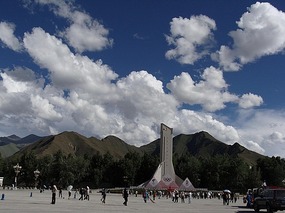
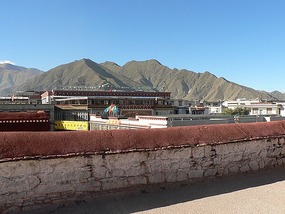
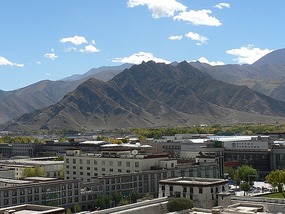
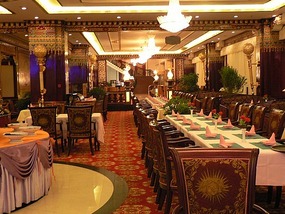
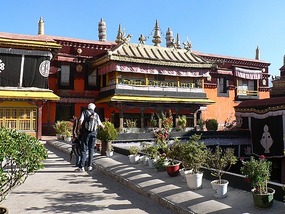
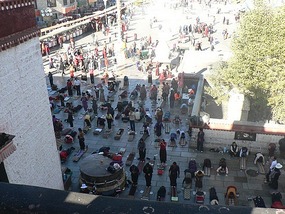
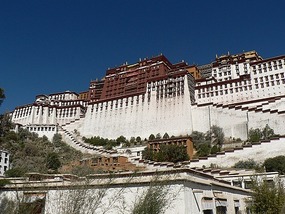
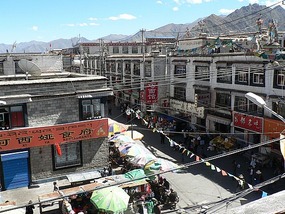


2025-05-23